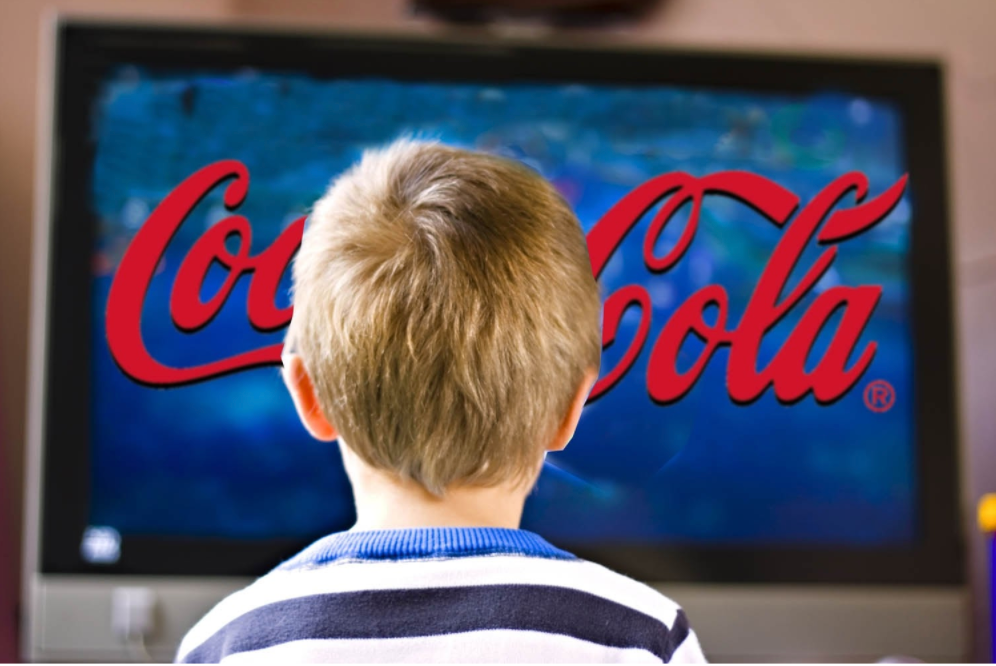Like it or not, advertising to children is a towering industry, with children under 12 influencing over $130-670 billion a year in parental purchases (Shah, 2010). Companies in the U.S. alone spend up to $18 billion a year on these advertisements with the goal to create paying consumers as early as possible (Shah, 2010). As a business model, this is shockingly effective, and creates what is called “cradle to grave” loyalty in their customers, which means that they are able to target the same repeat consumers for years to come. For this reason, children specifically between the ages of 4 and 12 have been increasingly targeted through marketing on television and media by major brands (Hill, 2011). However advertising in this way, at this age, is extremely problematic in a number of ways.
First of all it is important to take into account that children under the age of 8 do not yet have the cognitive ability to recognize persuasive intent, and are thus highly susceptible to advertising and their consumeristic goals. This lack of awareness of the commercialization of products is primarily due to the child’s stage in their cognitive development. When children are between the ages of 2 and 7 they are in what Jean Piaget defined as the preoperational stage of development (Sramova, 2013). This stage is characterized by egotistical thinking, meaning that a child can only see reality through their point of view, and lacks the awareness that other people can have varying viewpoints or motivations that differ from their own. This causes them to believe and trust in everything they see in the media as they lack the cognitive capacity to see the motivation for commercialization as a whole (Sramova, 2013). This is especially dangerous when products are advertised using popular characters and actors that appeal to children, as they have no concept of the reality of the character or they’re motivation for selling products. So if a child sees that Jojo Siwa says a certain brand of shoes made her a pop star and that they should buy them too, it must be true, right?
But children don’t have the means to buy these products on their own, which is where the parents come in. Advertising to children doesn’t only affect them, it affects their whole familial dynamic. When a child sees an ad and genuinely believes all the claims the marketing puts forth to them about the product, the natural next step is to go to their parents and beg for them to buy it for them. Unfortunately, this puts the parents in the difficult position of being “the bad guy” who has to explain that Hannah Montana doesn’t really wear those shoes and they won’t actually make them a pop star (Minsker, 2014). This kind of a realization can be crushing and putting the responsibility of that conversation on parents can drive a wedge between them and their children.
Children also tend to be what is called a “captive audience,” as they have little to no control over their own movement and what they see on a day to day basis. Granted, this is less applicable to older children, but generally speaking children under the age of 4 don’t have much of a say in what they watch on television let alone the ads that come up throughout the program (Shah, 2010). Some businesses actually make it a priority to place ads in places that children are guaranteed to see or hear them. One exceptionally famous example is that of BusRadio. BusRadio was a commercial radio company made specifically to be targeted to children. The company signed with school districts agreeing to provide age-appropriate music, school/public service announcements, as well as ads to school buses. After significant pushback, the company did eventually close its doors in 2009 (Wikipedia Contributors, 2021). The controversy did, however, bring up an important conversation about subjecting children to ads they cannot reasonably escape. Even McDonalds found itself in a similar predicament when they paid to have ads placed on children’s report cards (Marco, 2007). Despite them not making the news at the same capacity, this pervasive kind of advertisement is still very much commonplace throughout multiple aspects of a child’s life, from pop up ads on educational sites to toy billboards near the playground.
Hill, J.H. (2011). Endangered childhoods: how consumerism is impacting child and youth identity. Media, Culture & Society, 33(3) 347–362. Doi: 10.1177/0163443710393387
Marco, M. (2007). McDonald’s Advertises On Elementary School Report Cards. Consumerist. https://consumerist.com/2007/12/06/mcdonalds-advertises-on-elementary-school-report-cards/
Minsker, M. (2014). Is Kid-Targeted Marketing Unethical? Destination CRM. https://www.destinationcrm.com/Articles/CRM-Insights/Insight/Is-Kid-Targeted-Marketing-Unethical-98186.aspx
Shah, A. (2010). Children as Consumers. Global Issues. https://www.globalissues.org/article/237/children-as-consumers
Sramova, B. (2013). Media literacy and Marketing Consumerism Focused on Children. Procedia; Social and Behavioral Sciences. 141(2014) 1025-1030. https://doi.org/10.1016/j.sbspro.2014.05.172
Wikipedia Contributors. (2021). BusRadio. Wikipedia, The Free Encyclopedia. https://en.wikipedia.org/w/index.php?title=BusRadio&oldid=1048024484
